Luxurious Food and The Ultimate Pairings at Michelin-Starred Restaurants in Japan: Narisawa
by Kyoko Nakayama
@ 02 Jan 2018
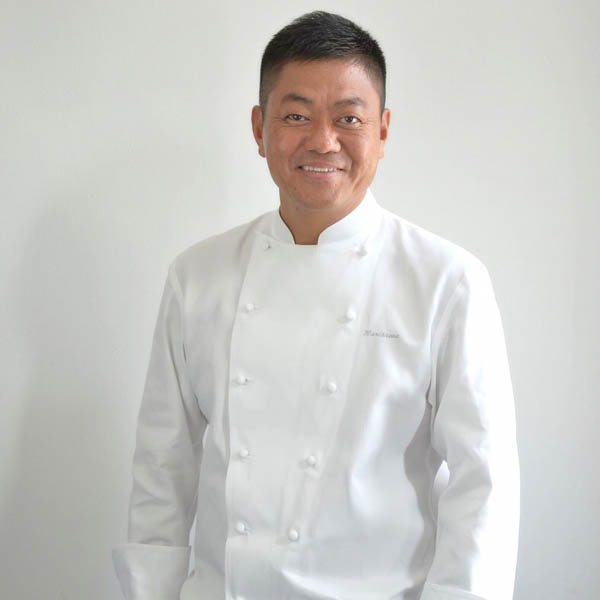 Chef Yoshihiro Narisawa:
Chef Yoshihiro Narisawa:
My culinary style is “Innovative Satoyama Cuisine”. Satoyama means the mountain area near a town. Our ancestors lived with the nature and our lives were blessed with it. I have been trying to reinvent the knowledge of our ancestors, and I recognized that it is sustainable and beneficial to the human body and spirit as well. To eat seasonal and local products nourish people. The ingredients are come from nature, so a chef needs to understand the nature as a naturalist and has to heads up the importance of it to the world. This is the reason how one of my signature dishes is “Satoyama Scenery” was made. This is a part of the responsibility as a naturalist, I think.
Kuro
This monotone dish is themed “Kuro”, black in Japanese. For this dish, Chef Narisawa uses wild vegetable root “kuzu”, Japanese arrowroot, from which our ancestors made oriental medicine. Together with squid ink, he makes crispy chips, it come with minced squid, squid ink, tomato paste and premium caviar from Miyazaki prefecture.
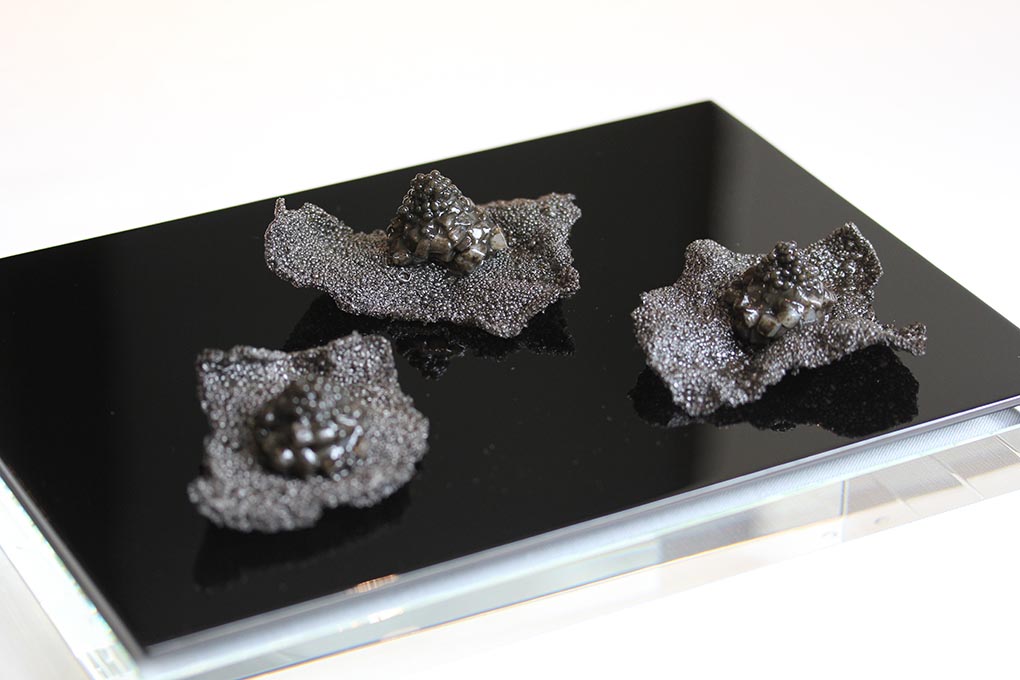
Pairing: Kazenomori Koborezake
This zake is made by patent-protected special method, “Ikakitori”. To avoid oxidization and keep the delicate aroma and umami, sake maker uses stainless tank and separate the mash from sake inside of it. Because of this procedure, this sake has slightly sparkling, and full of umami. This refreshing taste goes with nutty flavor and richness of Japanese caviar.
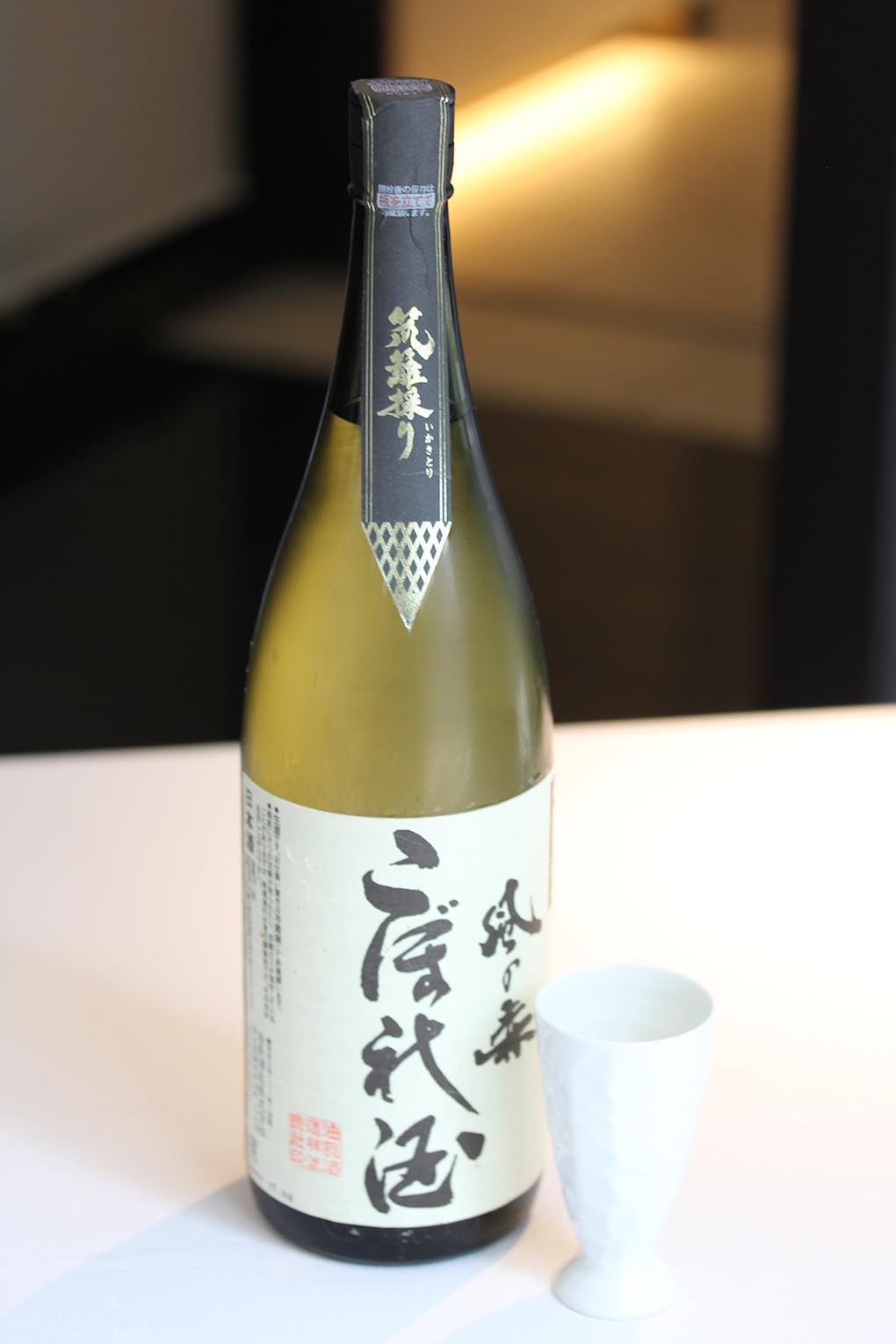 Satoyama Scenery
Satoyama Scenery
In the bamboo cup, there is “forest essence” made from cedar and Japanese oak flakes soaked in cold water for 5 minutes to give the water pure aroma of the forest. The crumbles are made by soy pulp and bamboo charcoal, added chlorophyll and green tea powder to give natural color. Lactic fermented soymilk made in house everyday and because of the power of the fermentation beneficial to human. Brown roots are made by burdock, sous vide with syrup then deep-fried. And the bread dough made with Japanese wheat flour and natural yeast, is baked in front of the diner using small stone oven, finished with chestnut powder.

Another significant part of this dish is using seasonal wild vegetables hand picked by local elder people in Kanazawa, Ishikawa. Chef Narisawa and the staff including service staff visit the area often and pick these wild vegetables with them. This is the process to understand the nature deeply. This dish is miniature of actual Satoyama, and reminds diner the importance of the nature, since in Japan, Satoyama is in danger. The wild vegetables used for the dish differs depends on season and showing actual Satoyama scenery of respective seasons. In total, we are using 500-600 types of the wild vegetables throughout a year. To present the seasons to the diners, I would like to show the richness of the diverse species in Satoyama and remind the diners to keep this beauty in the future as well.
Pairing: Aramasa Satouhei, Narisawa special Nakadori
This sake is made by “Kimoto” technique based on lactic fermentation, so round in flavor, Nakadori is purest and most balanced part of sake. It has gentle roundness like essence of the rice, and goes with the slight bitterness of the wild vegetables in the dish.
Life & Death 2010
In ancient times, hunting is necessary to survive. Nowadays, we seldom see the moment of death, but the fact hasn’t changed. We are maintaining our lives by taking other lives. Baby pigeon is pan roasted in low temperature to implement silky smooth texture, beetroot is oven baked, then grilled with the charcoal to keep the moisture inside and crispy skin. The brown sauce is made by pigeon bone, the trimmed part and cognac. The “blood” is made with beetroot and berry puree.
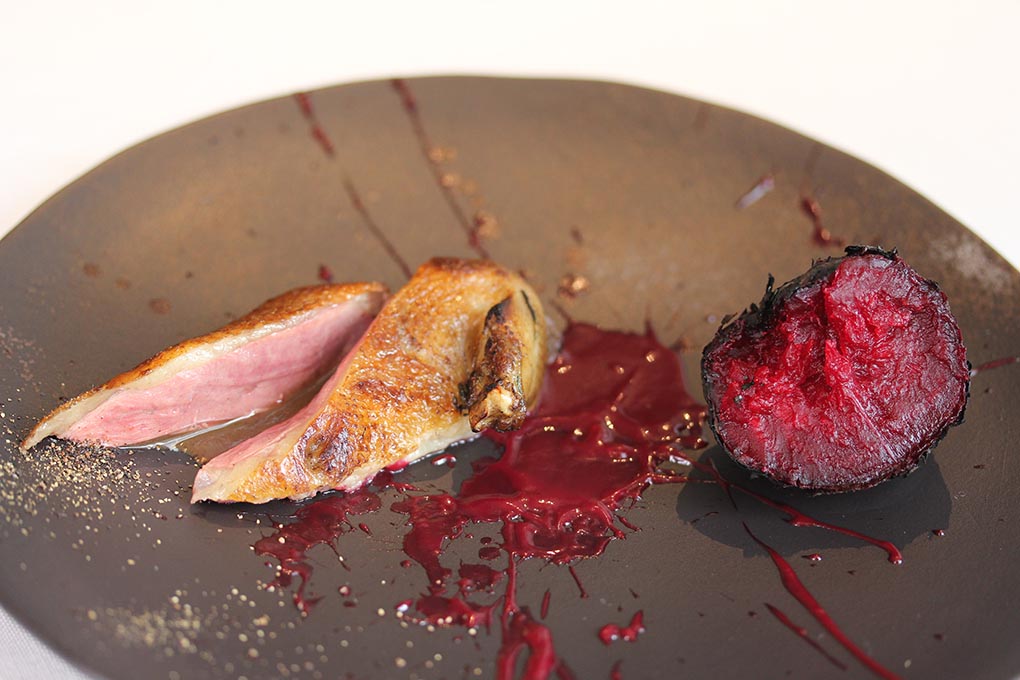 Pairing: Akishika Yamahai Motoshikomi
Pairing: Akishika Yamahai Motoshikomi
Yamahai is the method using lactic fermentation and longer time to make yeast starter. This sake is extracted directly from Yamahai yeast mash, so rich in amino acid, and vibrant acidity. This lemony acidity and full-bodied umami enhances the iron flavor of baby pigeon.
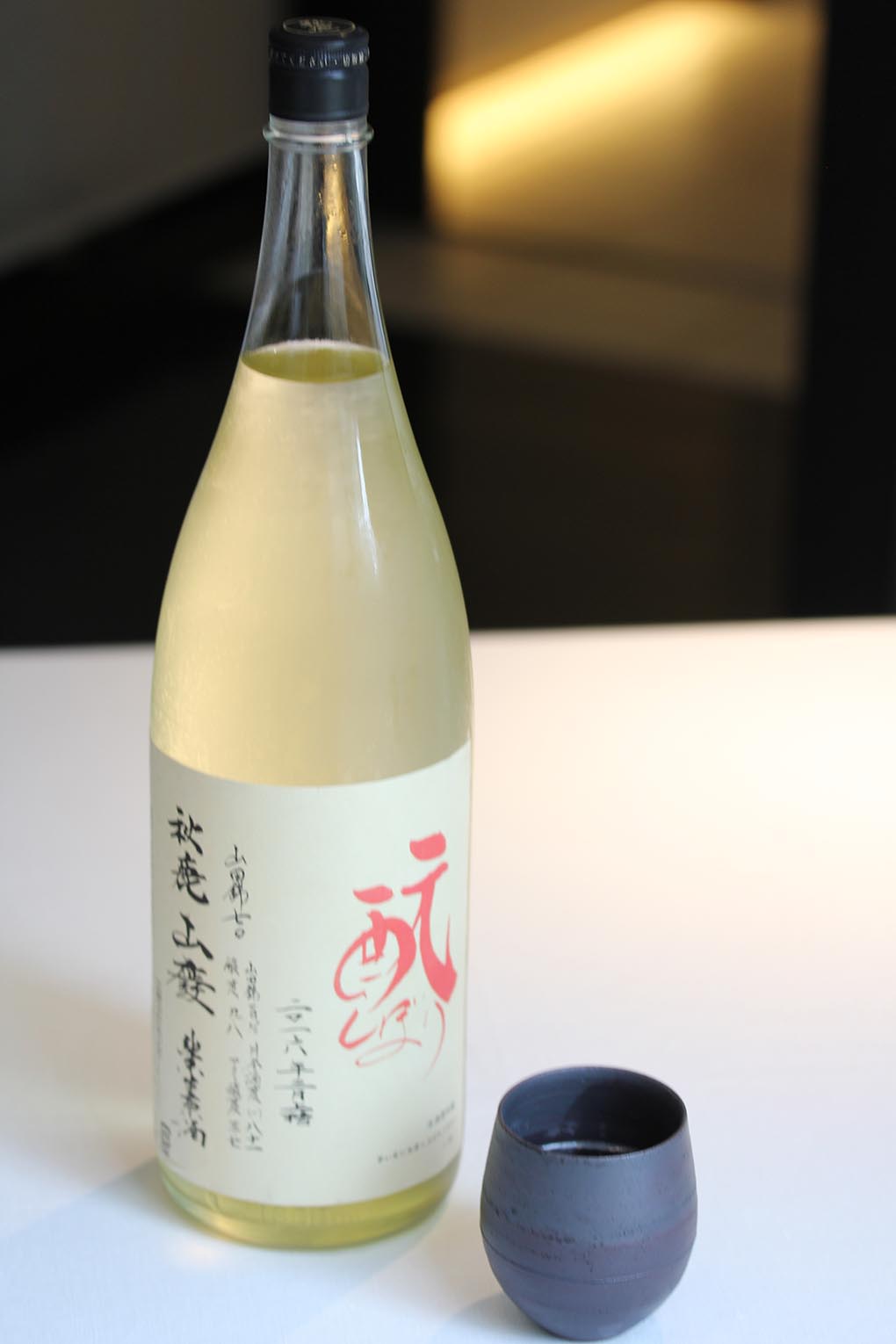 Sumi 2008
Sumi 2008
The sirloin part of the Kobe beef is pan roasted in low heat and basting with olive oil and butter until the core part turn to rose color, then coated with leek charcoal powder to give smoky flavor and umami. In ancient time, we make charcoal from wood for our daily lifes, but we seldom see this tradition anymore.
 Pairing: Jujiasahi Jyunmaidaiginjyo Namagensyu
Pairing: Jujiasahi Jyunmaidaiginjyo Namagensyu
Normal sake is added water before it ship out to control the alcohol content, but “gensyu” is the original condition before adding water. So gansyu has high alcohol content and bold flavor. This gensyu aged at 0 degree Celsius for 15 years, rich in umami and nutty flavor from aging. The rice specie used for this sake is “Omachi”, wild specie and contains lot of amino acid, so even after aging over a decade, it still keeping the structure, which match with red meats.


Image: Tsubaki and Koji
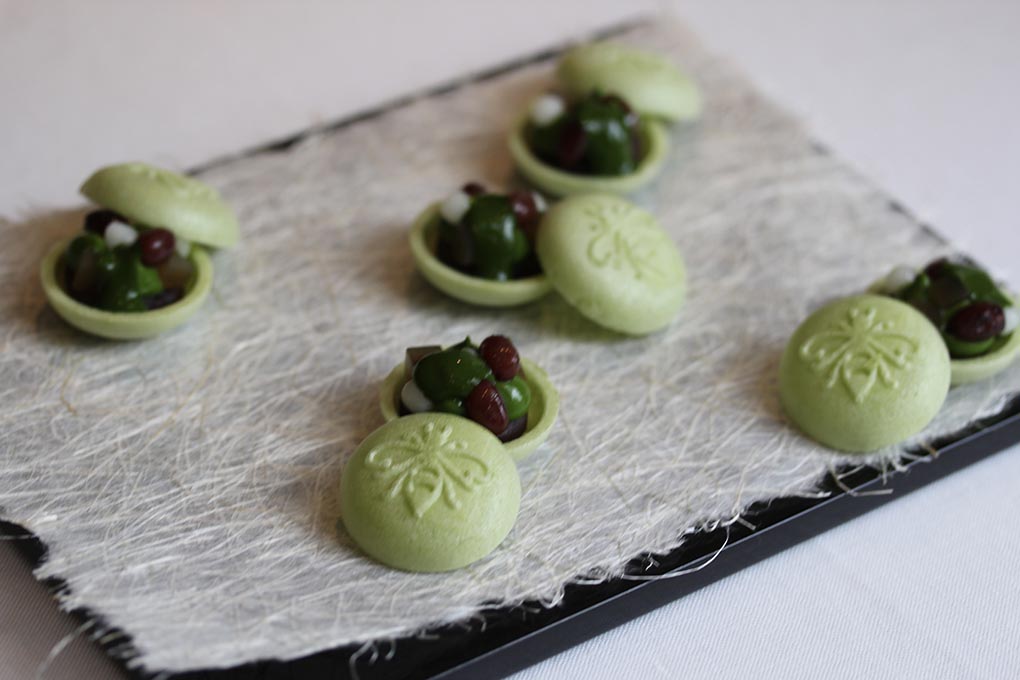
Image: Yamecha
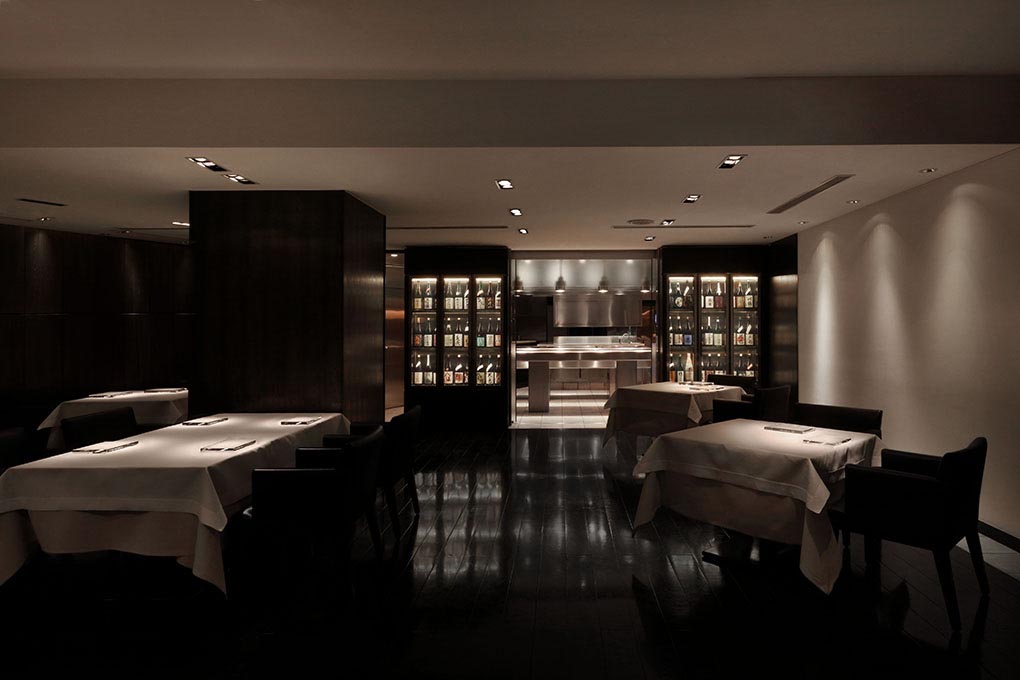
Image: Narisawa's interior
Do visit their website and make your reservations for a Satoyama experience at:
http://www.narisawa-yoshihiro.com/
 Chef Yoshihiro Narisawa:
Chef Yoshihiro Narisawa:








